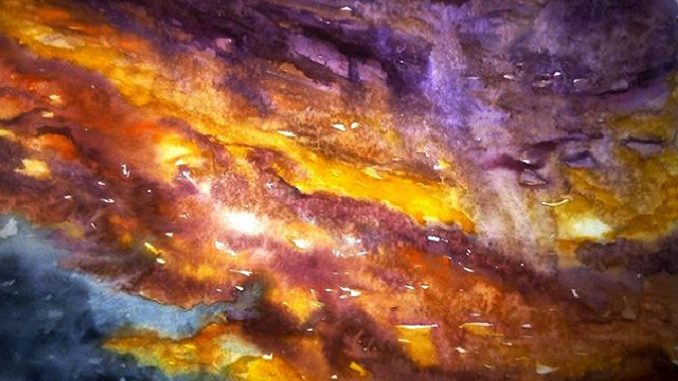
By Ramona Wadi
“The Wound Before Winter” is the prelude to the impressions which I have attempted to convey in this selection.
Painted in the aftermath of US President Donald Trump’s declaration on Jerusalem, the colors used, as well as the focus on land, seek to convey the ramifications upon Palestinian territory, rather than an isolated focus as depicted by mainstream media. There is a sequence of Palestinian territorial loss which has been adamantly ignored to the benefit of Israeli colonialism.
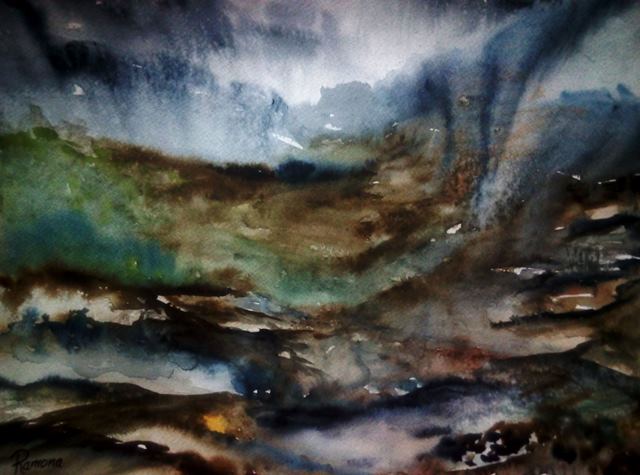
For every political decision, there is an impact which resonates directly within Palestine. Art employs another insight into the concept of the Palestinian cause.
“Path to the Olive Tree”, with its expanse of autumn sky and distant land, is a reminder of perception and emotion. It also beckons for closer scrutiny of what lies in that land and in the hearts of its people.
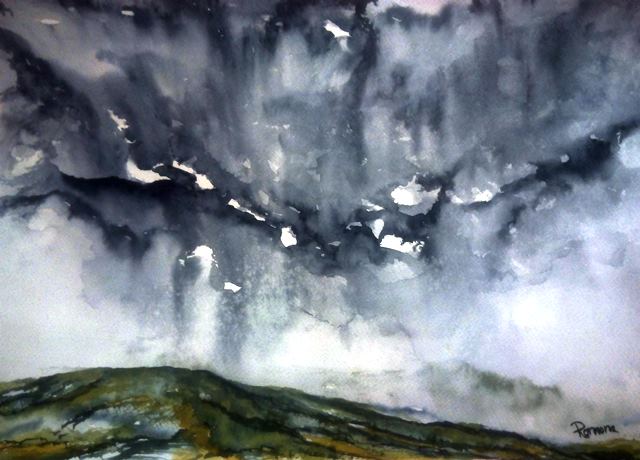
Land is both tragic and triumphant – the former a planned consequence of settler violence depicted in “
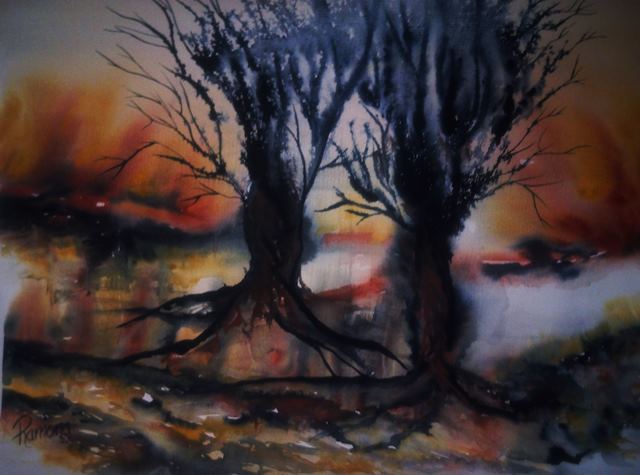
But there is also the renewal of land and Palestinian tenacity, as seen in “Heritage”. Both paintings can be constructed as a metaphor of Palestinian life, loss and regeneration. It is an assertion of “being”, as opposed to mere survival as a result of premeditated atrocities.
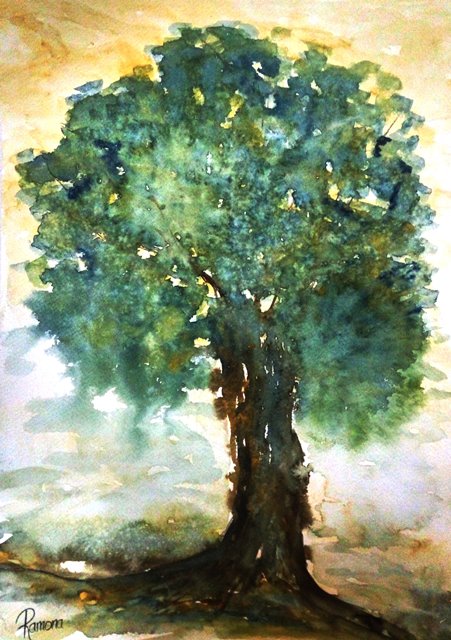
Yet Israel continues to commit atrocities – each one a reflection of previous violence. “Red” is an expression of this violent permanence which the international community has defended, to the detriment of Palestinians. It is also a reverberation of more recent violence against Palestinians defending their land without any representative political support.
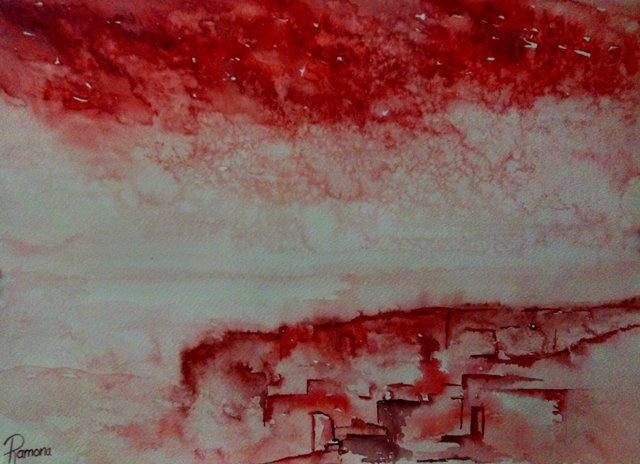
“Palestine’s Wounds” is an abstract rendition of the lacerations and mutilations inflicted by the Israeli military upon Palestinian civilians. The media reports statistics, while each rubber-coated bullet that punctures the body is forgotten, and so are the names of the wounded. Each bullet should serve as a reminder to articulate the differences between Palestine and colonial Israel festering in Palestinian territory.
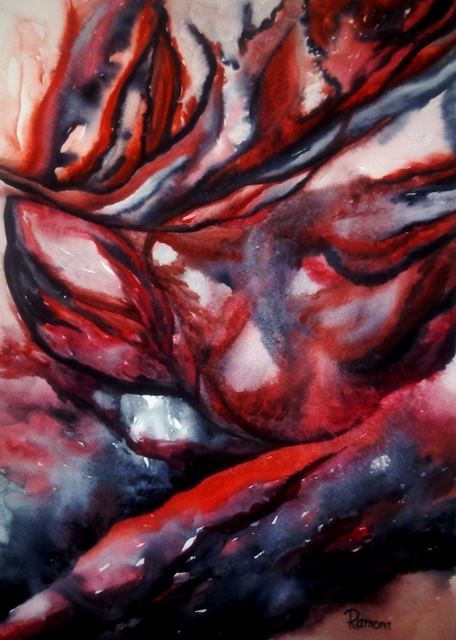
It is this differentiation, expressed in landscape and skies, which dominates the metaphor of the last two paintings.
“Sunset and Tear Gas” is inspired by Gaza’s mesmerizing sunsets – the vibrant colors dominate over the grey area indicating tear gas and the attempts to disperse the Palestinian will of self-determination. It is also a reminder of how Palestinians are capable of looking beyond, while their leaders remain entrenched in failed diplomacy which aids Israeli colonial violence.
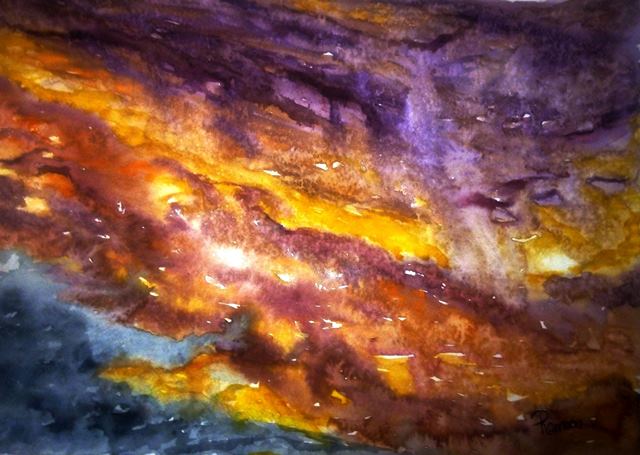
Hence there are two levels of awareness – the PA’s stagnant politics that contribute to the wounds suffered by Palestinians and the people’s spirit fused with land and skies in a metaphor of renewal.
Renewal is also reflected in the final painting, “Resting Place for Ibrahim” (in memory of Ibrahim Abu Thurayya). It is also a strong concept of the metaphor of return – the return to land after death and the absence of return in politics.
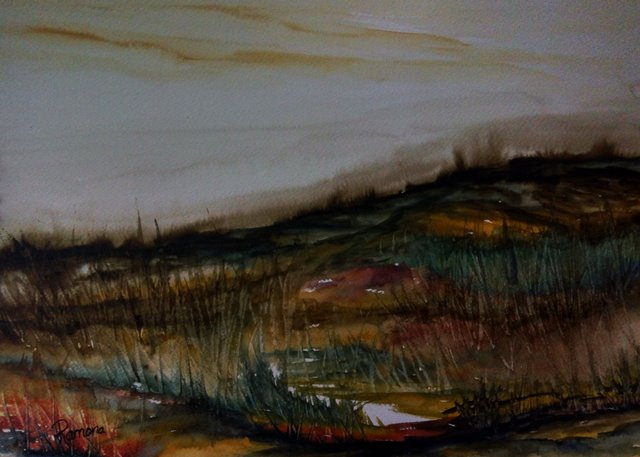
For such a contrast to exist in Palestinian narratives, it is hoped that this painting elicit enough unrest within one’s conscience and generate remembrance of the fact that Israel and the international community have contributed to a simple word and action becoming burdened with so many tragic variations.
– Ramona Wadi is an accomplished artist and a writer. She contributed this article and artwork to PalestineChronicle.com.

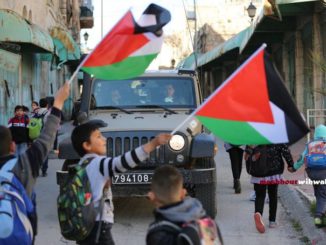
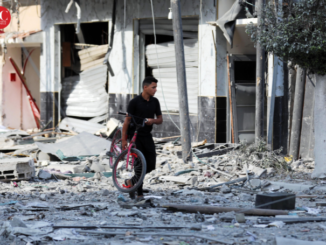
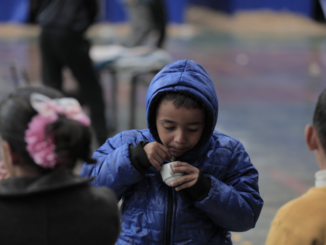




Is there any possibility of Ramona Wadi’s paintings or possibly one of them being marketed as posters for those who want to support and also have a picture in our home to represent and stimulate interest and support from other Americans who are not aware of the truth. Elle Rogers
‘The Dance of Burnt Olive Trees’…. so much love, so much sadness.
It reminded me of how powerful painting can be.
Astonishing. Thank you.